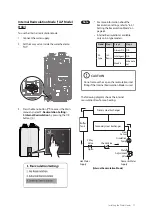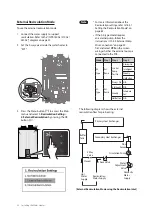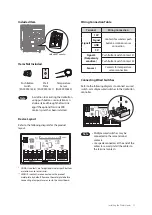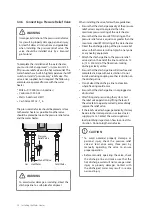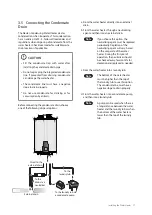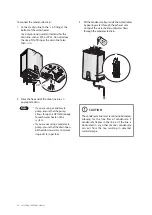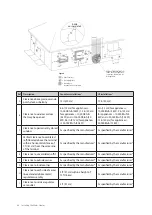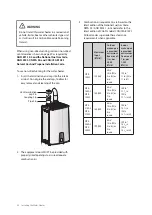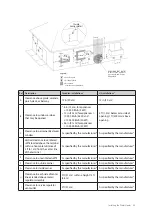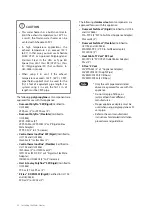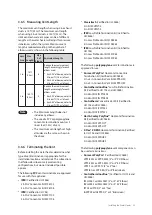
41
Installing the Water Heater
3.6.1 Venting the Water Heater
DANGER
This appliance is certified as a “Category IV”
appliance and requires a special venting
system. The vent system will operate with a
positive pressure in the pipe. Exhaust gases
must be piped directly outdoors using the
vent materials and rules outlined in these
instructions. Do not connect vent connectors
serving appliances vented by natural draft
into any portion of mechanical draft systems
operating under positive pressure. Follow the
venting instructions carefully. Failure to do
so will result in substantial property damage,
severe personal injury, or death.
WARNING
●
Improper venting of the water heater can
result in excessive levels of carbon monoxide,
which can lead to severe personal injury or
death.
This water heater must be vented
in accordance with the “Venting of
Equipment
“
section of the latest edition
of the ANSI Z223.1/NFPA 54 Natural Fuel
Gas Code in the USA and/or the “Venting
systems and air supply for water heaters
“
section of the latest version of the CAN/
CGA B149.1 Natural Gas and Propane
Installation Code in Canada, as well as
all applicable local building codes and
regulations.
Follow all instructions and
guidelines when venting the water heater.
Venting should be performed only by a
licensed professional.
●
The venting system must be sealed gastight
to prevent flue gas spillage and carbon
monoxide emissions, which will result in
severe personal injury or death.
●
The building owner is responsible for keeping
the exhaust and intake terminations free of
snow, ice, or other potential blockages, as well
as scheduling routine maintenance. Blocked
or obstructed vent piping terminations could
result in property damage, severe personal
injury, or death.
Corrosive Contaminants
Muriatic acid/hydrochloric acid
Refrigerant leaks
Chlorine-type bleaches, detergents, and cleaning
solvents found in household laundry rooms
Varnish removers or paint
Adhesives used to fasten building products and
other similar products
Chlorine-based swimming pool chemicals
Permanent wave solutions
Anti-static fabric softeners used in clothes dryers
Calcium chloride used for thawing
Spray cans containing chloro/fluorocarbons
Cements and glues
Sodium chloride used for water softening
Chlorinated waxes/cleaners
Corrosive Sources
Remodeling areas
Refrigeration repair shops
New building construction
Metal fabrication plants
Laundry areas and establishments/dry cleaning
Swimming pools
Auto body shops
Furniture refinishing areas and establishments
Garages with workshops
Plastic manufacturing plants
Beauty shops
Photo processing plants
Summary of Contents for NPE-180A2
Page 123: ...122 Appendixes 1 2 3 4 5 6 7 8 9 10 11 12 14 17 18 11 NPE 150S2...
Page 131: ...Memo...

